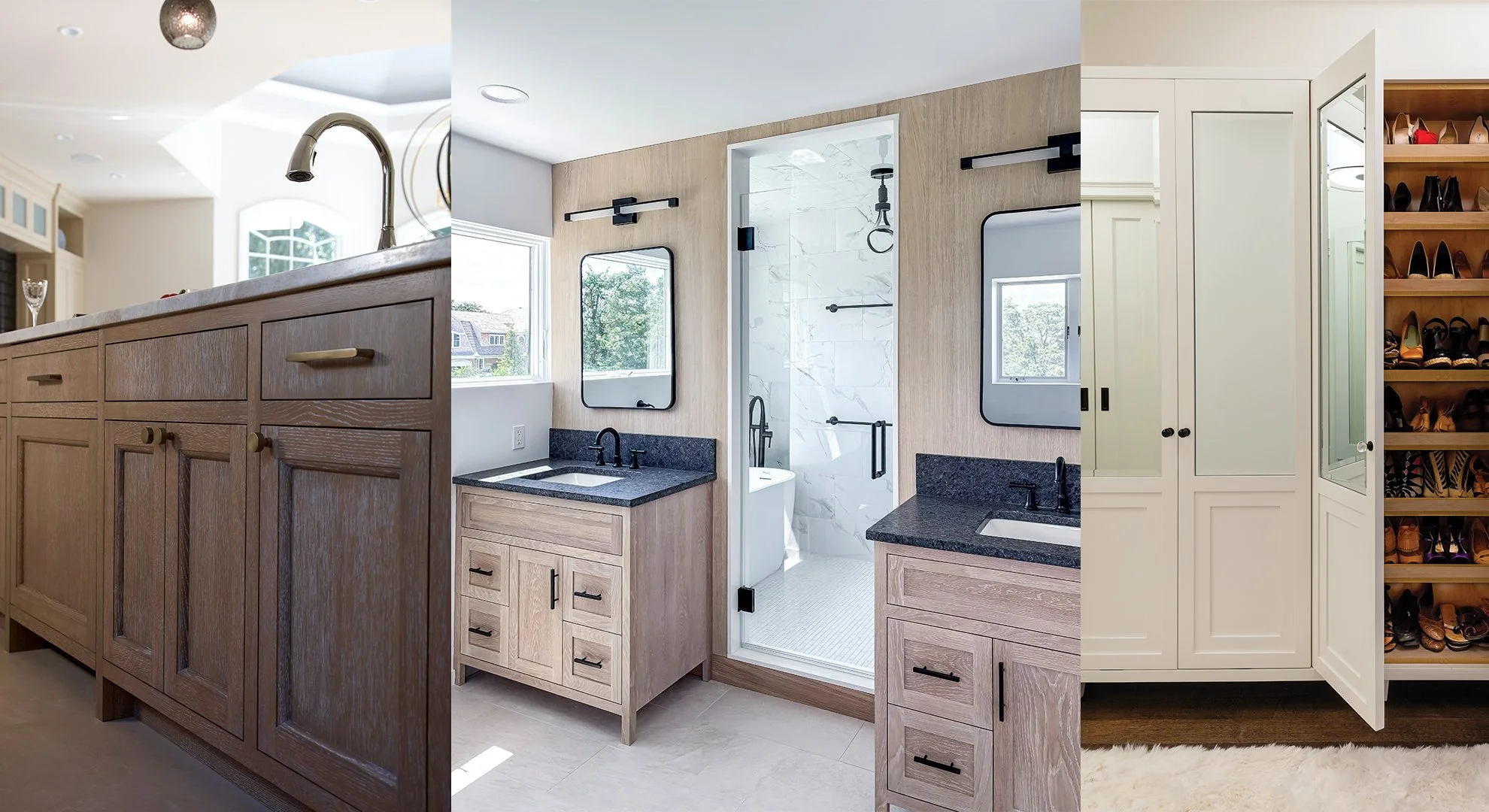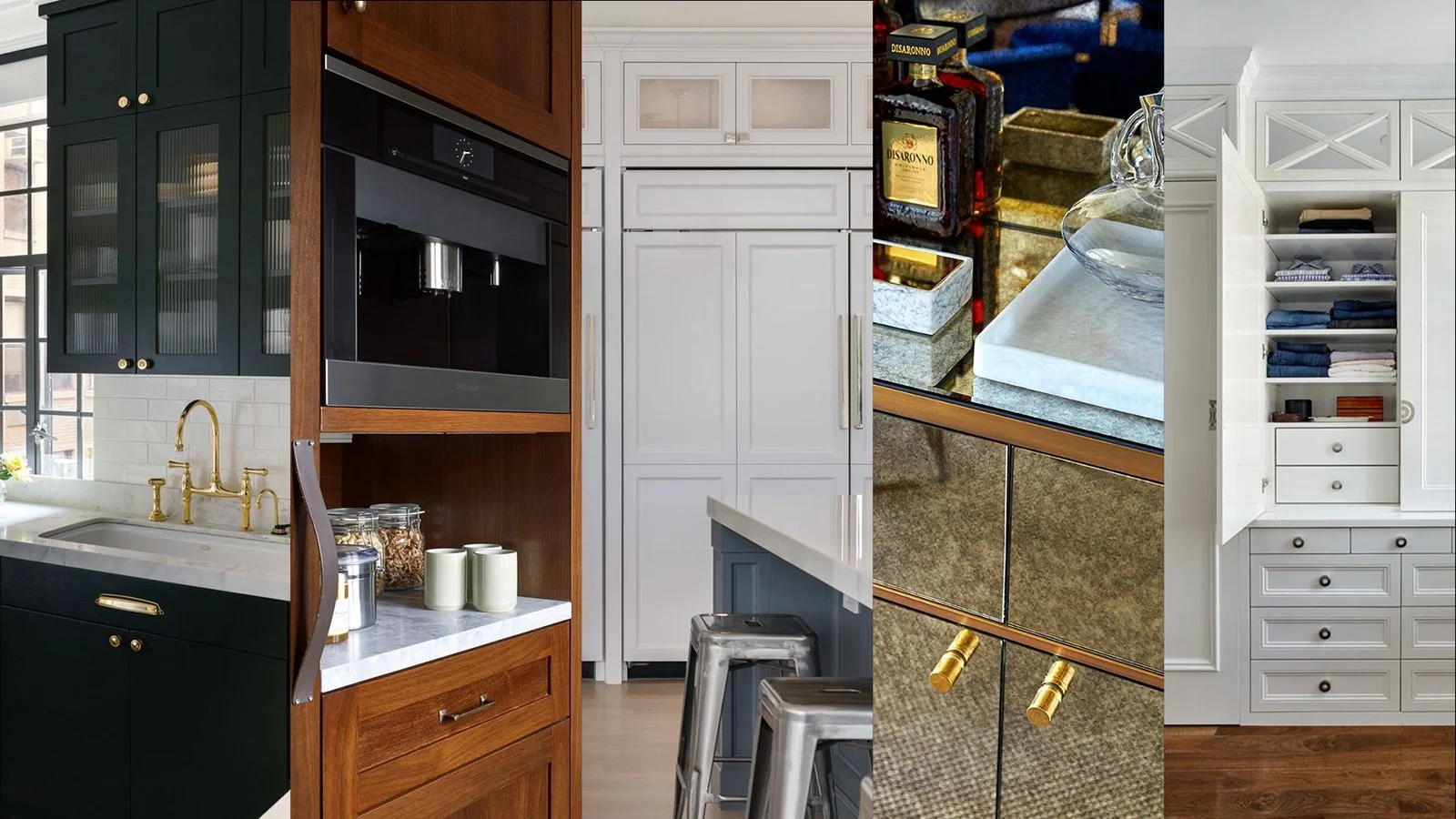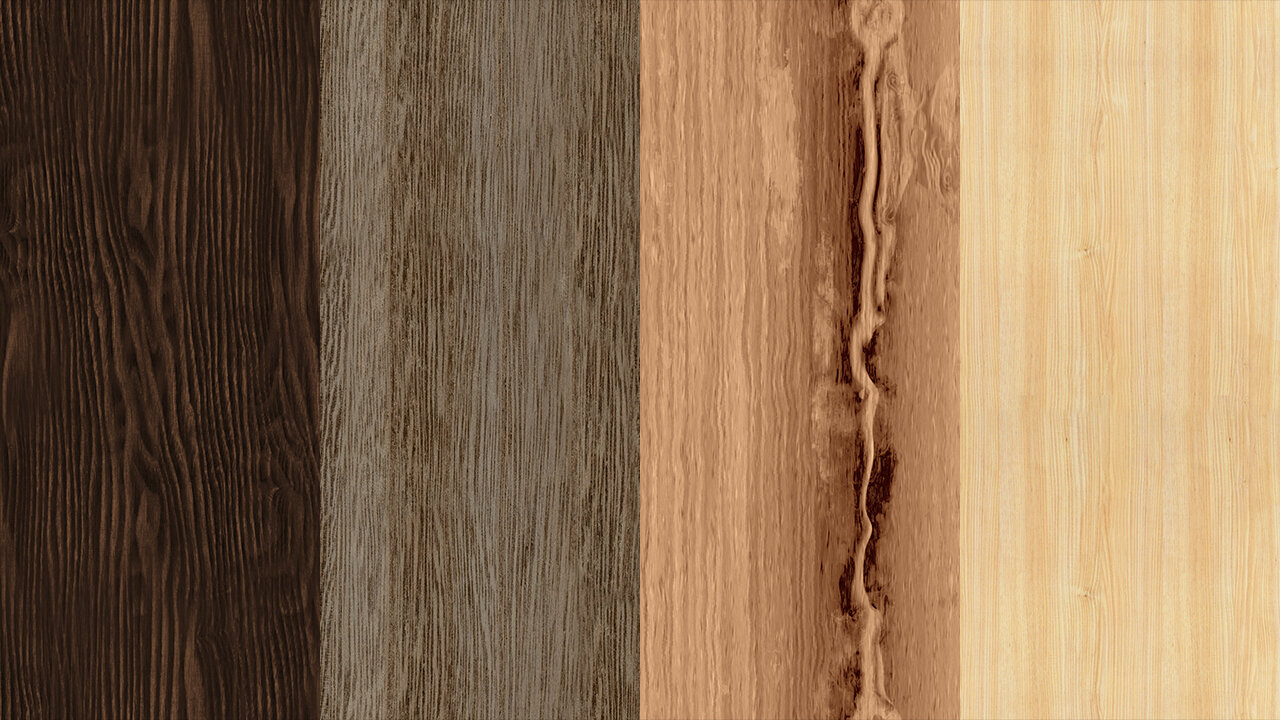Wooden cabinets are the kind of thing that quietly anchor a home—whether it’s the warmth of oak in a cozy kitchen or the rich tones of walnut in a stylish living space. But here’s the thing: wood is alive. It reacts to heat, humidity, sunlight, and even the products you use to clean it.
So, if you’ve ever looked at your cabinets and wondered, “Am I actually cleaning this right?”—You’re not alone. Let’s talk through what really keeps wooden cabinets in great shape—no fancy tools required, just a few mindful habits that go a long way.
Why It’s Important to Know How to Care for Your Cabinets
Wooden cabinets are a big part of your home—and a big investment. Taking care of them helps you avoid expensive repairs, prevent damage from harsh products, and keep them looking beautiful for years. Regular care protects your wood’s finish and keeps your space feeling fresh, polished, and well-loved.
When you’ve chosen to invest in custom cabinetry, you want it to endure for a long time. Every finish, hinge, and grain detail deserves a little attention. A few simple steps today can save you from fading, warping, or peeling—and keep your wood aging beautifully for years to come.
Regular Maintenance for Wooden Cabinetry
Keeping your wooden cabinets in great shape doesn’t take much—just a bit of consistency. With regular cleaning, the right products, and a few smart habits, you can protect the wood’s natural beauty and extend its lifespan. Below are simple, practical cabinet care tips to keep them looking as good as new, day after day.
1. Routine Cleaning for Wooden Cabinets
A quick dry wipe or dusting with a soft microfiber cloth each day keeps your wooden cabinets looking fresh and prevents grime from settling in. Gentle, consistent care makes a big difference—and you don’t need to overdo it.
Here’s a simple breakdown of how often to clean and what to focus on:
Daily: Wipe cabinet surfaces and handles with a dry or slightly damp cloth to remove dust and fingerprints.
Weekly: Use a mild mix of dish soap and warm water or a specially formulated wood cleaner to clean areas that see the most use, like around handles and near cooking spaces.
Monthly: Do a light polish using a wood-safe conditioner or oil to maintain shine and protect the finish.
As Needed: If you notice grease buildup, mix in a splash of white vinegar with warm water to gently cut through residue. Always dry surfaces right after cleaning.
Additional Consideration: Take note what kind of finish your cabinet has—whether it’s painted, stained, laminated, etc. Use the appropriate type of cleaner for each one. Wood cleaners sometimes have oil or wax, which you don’t want on painted surfaces.
We want to emphasize that regular cleaning should be gentle. It’s equally important to know what not to do when taking care of your wood cabinetry
Avoid harsh cleaners, bleach, vinegar or ammonia—they can damage the finish and dull the natural beauty of the wood.
Don’t use abrasives such as rough cloths, steel wool, scouring pads, and Magic Eraser. These will leave scratches on your cabinets.
Don’t spray any cleaners directly on cabinets, so they don’t soak excess moisture. Spray on the cloth instead, and make sure it’s not dripping wet.
2. Protect Your Wooden Cabinets from Moisture Damage
If wood had a worst enemy, it would be water. Moisture causes warping, swelling, and in some cases, peeling finishes—none of which you want on your beautiful cabinetry. There are a number of ways to prevent damage:
Always wipe up spills right away, especially near sinks or dishwashers.
Avoid hanging wet towels over cabinet doors.
Be mindful of steam and humidity around your cabinets. Constant exposure can damage the finish or cause the wood to swell, so ensure proper ventilation and keep moisture directed away from cabinet surfaces.
Monitor your home’s humidity levels and ensure you’re HVAC is in good order.
Ensure that humidity is constant even with changing seasons.
Use a dehumidifier if you find your HVAC system isn’t enough.
Wood loves consistency—not too dry, not too humid. A balanced environment helps preserve its shape and finish.
3. Polish Wooden Cabinets for a Lasting Shine
Polishing your wooden cabinets helps restore their natural glow and protects the finish from everyday wear. A little care goes a long way—think of it as conditioning the wood so it stays smooth, rich, and beautifully alive.
For best results, use a wood-safe polish or conditioner every few months. Choose natural, oil-based formulas like beeswax or lemon oil, and avoid silicone sprays that can leave residue over time. Apply lightly with a soft cloth, following the grain for an even shine.
If you know which finish was used on your cabinets, it’s best to stick with that brand’s recommended cleaner or polish. For example, at Wood & Co, our wood cabinets (when not painted) are finished with Rubio Monocoat, a premium oil that enhances the wood’s depth and durability. For Rubio Monocoat finishes specifically, the brand’s own Renew polish is designed to refresh and nourish the surface without affecting its natural protection.
Using the right polish not only keeps your cabinets looking their best—it also preserves the integrity of the finish, ensuring your investment lasts beautifully for years.
4. Don’t Forget the Hardware
The knobs, pulls, and hinges are often overlooked, but they get handled daily—literally. Grease, oils, and dust can collect around them and make even the cleanest cabinets look dull.
Maintain your cabinet hardware by:
Wiping hardware with a damp microfiber cloth and mild soap.
Using a small brush (like a toothbrush) to get into detailed areas.
Tightening loose screws and checking that hinges open smoothly.
Be sure to identify the material and finish of your hardware before cleaning. Each type requires specific care—polished metals often need specialized products to preserve their shine, while brushed finishes benefit from gentler cleaners that maintain their subtle texture. For wood hardware, use products made specifically for wood to avoid drying or discoloration.
Properly maintaining your hardware not only enhances your cabinetry’s appearance but also helps preserve its quality and ensures smooth, long-lasting performance.
5. Protect From Sunlight and Heat
If your cabinets are near a big window, sunlight might be fading the wood without you even realizing it. Likewise, constant exposure to excess heat such as those from an oven or stove, can discolor finishes over time.
A few easy tweaks:
Use curtains or blinds during strong daylight hours.
Add heat shields or simply keep small appliances a few inches away from cabinetry sides.
Avoid putting under-cabinet lights too close to the surface unless they’re LED.
This keeps the color and finish consistent—especially important if you have natural-stained wood.
Photo by Quinn Simonson on Unsplash
6. Give Them a Seasonal Deep Clean
Twice a year, take a day to give your cabinets a full refresh. Empty everything out, wipe the interiors, check for crumbs or leaks, and clean the undersides of shelves.
This is also a good time to:
Tighten any handles or hinges.
Reorganize storage to avoid overloading shelves.
Spot-check corners for signs of moisture or wear.
It’s a simple routine that instantly elevates the look of your kitchen, making it feel clean, refreshed, and well cared for. Beyond just appearance, this small act of maintenance helps preserve the warmth and character of your wooden cabinetry, keeping it as beautiful as the day it was installed. A few minutes of care can go a long way in maintaining the heart of your home.
7. Consistent Care Makes a Lasting Difference
Wooden cabinets don’t need constant attention—just mindful care. When you treat them like the natural, living materials they are, they reward you with decades of beauty and function. Beyond routine cleaning, make it a habit to regularly inspect your cabinets for any early signs of wear—such as loose hinges, fading finishes, or small moisture spots. Catching these issues early prevents them from turning into costly repairs later on.
Even a quick monthly check can make a difference. So next time you’re wiping down your countertops, take a few extra seconds to look over the cabinet doors and hardware. It’s one of those simple habits that keeps your home looking effortlessly refined and well cared for.
8. Knowing When It’s Time for a Repair
Even with regular care, some issues are beyond the scope of routine cabinet maintenance. Over time, natural wear, accidents, or simple aging can cause visible damage—like warped doors, peeling finishes, or hardware that no longer functions properly. When that happens, it’s best to bring in professionals who can assess whether a simple repair will do or if it’s time to replace certain components.
In some cases, you might even consider a full renovation—whether it’s refreshing a few cabinet doors or updating an entire kitchen, bath, or walk-in. Having experts handle these repairs ensures your cabinetry remains as beautiful and functional as it was designed to be.
Final Thoughts
Regular cabinet maintenance is far easier (and more affordable) than dealing with repairs or replacements down the line. Think of it as protecting an investment that brings warmth and timeless appeal to your home every day
At Wood & Co, we believe your cabinets are more than just functional storage—they’re a reflection of your home’s craftsmanship and character. As this guide shows, caring for them doesn’t have to be complicated. A little attention—regular cleaning, gentle polishing, and occasional inspection—can go a long way in preserving their natural beauty and performance.
If you ever need expert advice on caring for or restoring your wooden cabinetry, our team is always here to help. Because caring for wood isn’t just maintenance—it’s a way of honoring the craftsmanship that makes a home truly yours.













